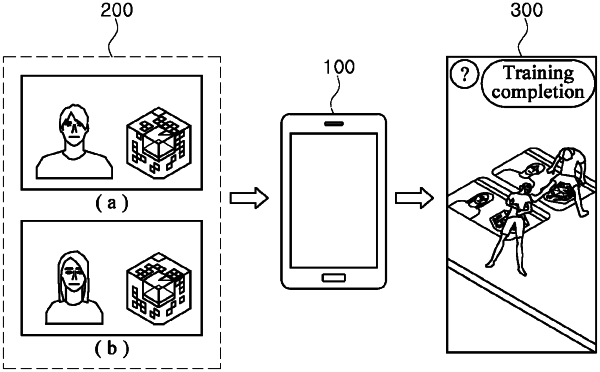| CPC G09B 5/06 (2013.01) [G09B 19/00 (2013.01)] | 11 Claims |

|
1. A method of providing virtual patient treatment training based on augmented reality, the method being performed by an apparatus, the method comprising:
creating a virtual patient scored according to a condition of the virtual patient based on medical statistics;
setting vital signs by additionally deriving symptoms caused by injuries of the created virtual patient and severity classification—the vital signs being measurement values of respiration, pulse, body temperature, and blood pressure, and including at least one of injuries, symptoms, main complaint required for treatment of the virtual patient;
automatically assigning necessary treatment data based on the set vital signs;
providing the created virtual patient and the vital signs to a user based on the augmented reality using a user terminal;
receiving a result of treatment for the virtual patient by the user based on the vital signs of the virtual patient through the user terminal; and
providing evaluation data by comparing the treatment data for the virtual patient and the result of the treatment for the virtual patient by the user,
wherein, when creating the virtual patient, an injury area, a degree of injury,
and an injury type of the virtual patient are determined, the degree of injury for each injury area is set to a preset value, the degree of injury greater than a certain degree is given to a severe patient, and after the injury area and the degree of injury are specified, the injury type capable of occurring due to an accident mechanism is given, wherein the degree of injury is given based on an injury severity score (ISS),
wherein, when automatically assigning the treatment data, treatment with the greatest effect is preferentially assigned among a plurality of treatments to be given to the virtual patient according to the injuries, the symptoms and the main complaint.
|